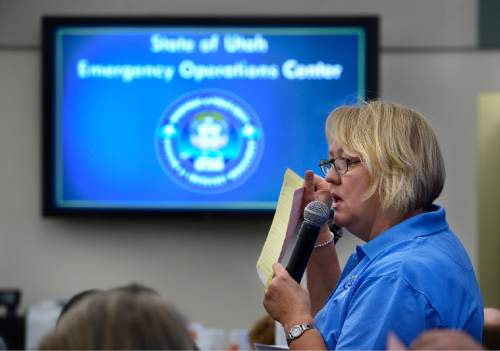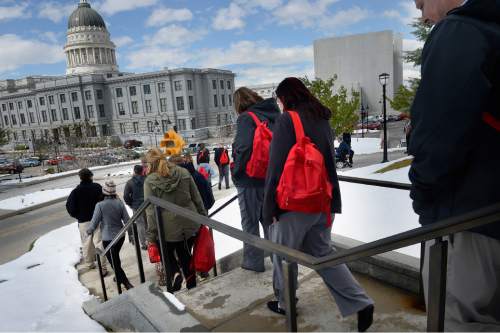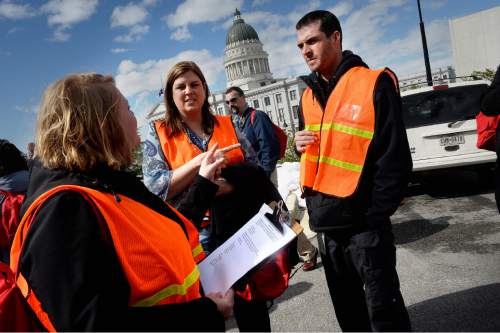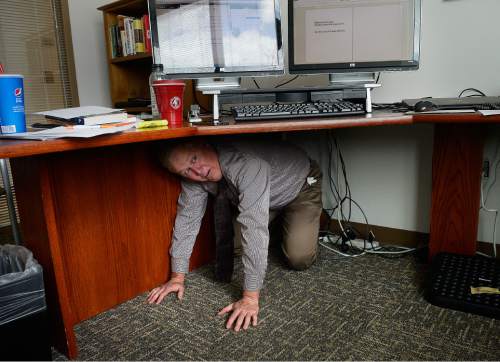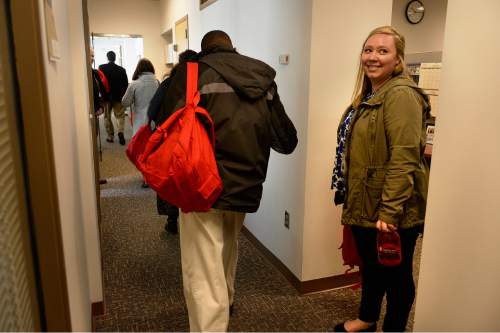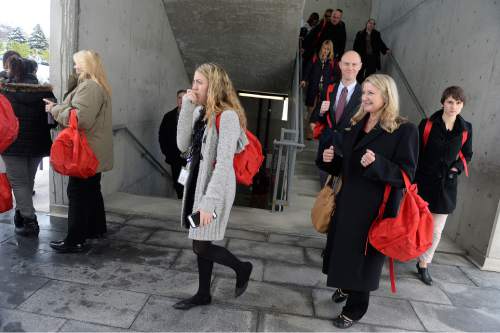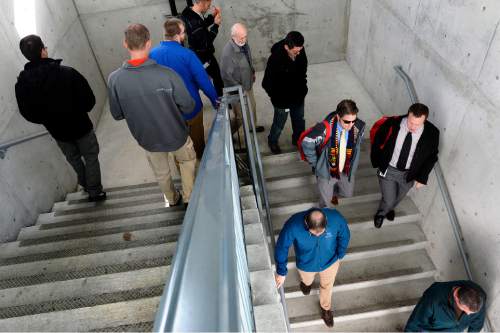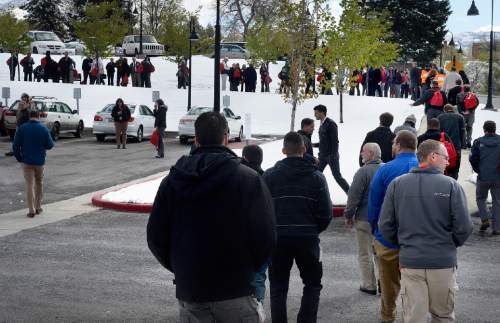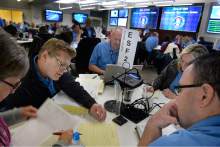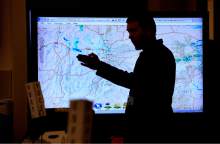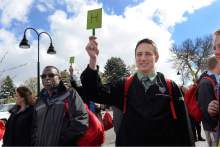This is an archived article that was published on sltrib.com in 2015, and information in the article may be outdated. It is provided only for personal research purposes and may not be reprinted.
As Utahns checked their earthquake readiness Thursday, regional planners offered dire scenarios for prospective death tolls, destroyed buildings and economic damage across the state from a major temblor.
Nearly 90 percent of Utahns live or work near one of the Wasatch Front's many subterranean faults. Awareness campaigns in the annual Great Utah ShakeOut urge residents to prepare for a magnitude 7.0 quake, in keeping with evidence that the region's geology has produced such massive upheavals about every 300 to 350 years.
"We are due for an earthquake," said Joe Dougherty, spokesman for Utah's Division of Emergency Management. "We don't like to say we're overdue because there's no predicting them. But in geologic time, we know we are close."
Nearly 920,000 Utahns signed up to take part in Thursday's drills and other preparedness checkups.
Envision Utah planners, meanwhile, are using computer models to project what the state may look like in 2050, when it has twice the population. That modeling includes a review of various steps policymakers might take to raise disaster resilience by lessening a quake's potential havoc.
Their findings are stark.
Without added spending to retrofit old structures and toughening building codes, models indicate a 7.0 quake would kill or maim as many as 14,300 Utahns. Emergency responders and medical facilities would be swamped with the injured. More than 115,000 homes would be wrecked, displacing up to 350,000 people, many of whom would likely leave the area and never return.
Schools, hospitals and nursing homes would be especially vulnerable in this "do little now" scenario. Vital utilities such as water, electricity and basic transportation would take an intolerably long time to restore, further harming any ability to recover.
"We're looking at not only whether we're ready to meet the immediate needs following the disaster," said Robert Grow, CEO of Envision Utah, "but also whether Utah's economy and people's lives are so significantly damaged that it permanently injures us."
Earthquake-disaster scenarios looked significantly better with modest changes to rules on new and existing construction, Envision Utah says.
More than half the predicted deaths in the worst-case models stemmed from severe damage to the region's nearly 165,000 unreinforced masonry buildings, many of which are homes built before the 1970s. Constructed with supporting walls made of masonry such as brick, stone and concrete without wood or steel supports, these buildings are far more vulnerable to collapse when shaken.
Other quake-prone states such as California long have required these structures to be fortified.
Utah, in general, has not, with narrow exceptions for some schools and historic landmarks. Depending on the building, retrofitting can involve strengthening foundations, walls and columns; repointing mortar joints; adding new beams; installing anchor bolts; and reinforcing chimneys and floors.
Envision Utah's models indicate that retrofitting all these buildings — at a cost of about $5,000 to $10,000 per home — would lower potential deaths and life-threatening injuries from a large temblor by 70 percent.
Moderate toughening of Utah's building codes on new construction and retrofitting a third of its old masonry structures within the next 35 years, according to Envision Utah, would cut deaths and life-threatening injuries to 10,800 people.
Significant changes to codes for new buildings and fixing two-thirds of the old masonry ones would drop the toll to 7,700, while truly beefed-up codes and repairing all the old buildings would lower fatalities and major injuries to about 4,400 people.
"It does cost money," said Leon Berrett, chairman of Utah's Seismic Safety Commission. "But even those initial steps can add dramatically to the strength and safety of the building."
Readying utilities for the Big One, said Berrett, "is a much tougher nut to crack."
The extent of damage to the state's predominantly underground utility lines would depend on the kind of earthquake, he said. Pronounced vertical shifts between geologic plates might break large numbers of lines, while liquefaction — where seismic activity loosens soils — might have lesser impact.
According to predictions from utility companies, said Grow, "the thing that is going to get damaged the most is all the local neighborhood infrastructure, the water lines, the sewer lines, the natural-gas facilities."
Berrett said those vulnerabilities can be partly mitigated through regular inspection and maintenance programs by private utility companies and Utah's scores of special-service districts.
Twitter: @TonySemerad —
Your Utah, Your Future
With Utah's population expected to double by 2050, residents and policymakers face key planning decisions that will directly shape what that future looks like.
In one of the largest public-polling efforts in state history, Envision Utah is inviting residents to take an online interactive survey to gauge public views on 11 major issues such as air quality, water, transportation, energy and more.
The "Your Utah, Your Future" poll — accessible at envisionutah.org — is open to all residents through the end of May.





